预计2023 年至 2031 年期间缬草酸市场的复合年增长率为 5%,市场规模将从 2023 年的 XX 百万美元扩大到 2031 年的 XX 百万美元。
报告按应用细分(API 中间体、润滑剂、香精和香水等)。全球分析进一步细分为区域和主要国家。就地域而言,市场分为北美、欧洲、亚太地区、中东和非洲以及南美和中美)。报告以美元为单位提供上述分析和细分的价值。
报告目的
The Insight Partners 的《缬草酸市场》报告旨在描述当前形势和未来增长、主要驱动因素、挑战和机遇。这将为各种业务利益相关者提供见解,例如:
- 技术提供商/制造商:了解不断变化的市场动态并了解潜在的增长机会,从而能够做出明智的战略决策。
- 投资者:对市场增长率、市场财务预测以及整个价值链中存在的机会进行全面的趋势分析。
- 监管机构:监管市场政策和警察活动,旨在最大限度地减少滥用行为,维护投资者的信任和信心,维护市场的完整性和稳定性。
戊酸市场细分
应用
- API 中间体
- 润滑剂
- 香精和香水
- 其他的
定制此报告以满足您的需求
您可以免费定制任何报告,包括本报告的部分内容、国家级分析、Excel 数据包,以及为初创企业和大学提供优惠和折扣
- 获取此报告的关键市场趋势。这个免费样品将包括数据分析,从市场趋势到估计和预测。
戊酸市场增长动力
- 加工食品中风味趋势日益增长:食品和饮料市场(尤其是强化或加工食品)的趋势促使人们越来越多地使用戊酸作为调味剂。尤其是,消费者倾向于要求即使是现成的加工食品也具有异国风味和不寻常风味,这导致人们越来越多地使用戊酸作为增味剂。
- 制药和个人护理推动了对缬草酸的需求:缬草酸也是多种药物制造的中间体,在香水和化妆品行业中用作香料或增稠剂。这一趋势将受到制药和个人护理市场增长的推动,而健康和保健趋势将推动这一趋势。
- 塑料使用量增加推动了增塑剂中戊酸的使用:戊酸是生产塑料溶胶的重要原料,塑料溶胶是硬质和软质塑料的组成部分。随着汽车、建筑和工业及消费品等行业对塑料的需求不断增加,预计戊酸在增塑剂制造中的应用将继续增加。
戊酸市场未来趋势
- 可持续的缬草酸生产越来越受到重视:近年来,人们越来越重视可持续的缬草酸生产,强调利用本土原材料并尽量减少对环境的影响。随着消费者和行业越来越多地采用环保产品,这迫使制造商寻找更环保的缬草酸生产方法。
- 对生物基化学品和绿色替代品的需求不断增长:为了响应这一趋势,人们也在寻求将戊酸用于生产生物基化学品,尤其是随着对绿色非石油基替代品的需求不断增加。它符合试图提高化学工业效率和尊重资源的观点,因此在生物塑料和生物燃料中对戊酸的应用进行了创新。
- 天然香料和香精的用途日益广泛:香料和香精行业也认识到了戊酸作为独特气味剂的潜力。由于消费者对天然和精致香料的兴趣日益浓厚,戊酸已成为香水、空气喷雾剂和调味剂中更常用的成分。
戊酸的市场机会
- 新兴经济体的工业增长:新兴经济体的工业化和城市化进程迅速发展,导致对戊酸等化学品的消耗量增加,需求量不断增加。企业可以利用亚太地区、拉丁美洲等食品、制药、塑料行业蓬勃发展的地区的增长前景。
- 转向可持续的生物基化学品推动了戊酸市场的发展:考虑到当前的环境保护趋势,人们正在转向可持续的生物基化学品。由于戊酸来源于植物,它为制造商提供了一个市场机会,在这个市场上,大多数行业,尤其是生物塑料、生物燃料和绿色化学品,都需要更环保的原材料。
- 高效戊酸生产技术的进步:原料化学合成领域取得了新进展,旨在短时间内利用少量资源生产戊酸。此类技术将通过降低生产成本、提高可扩展性以及提高食品、制药和工业市场所需的戊酸质量来促进市场增长。
戊酸市场区域洞察
Insight Partners 的分析师已详细解释了预测期内影响缬草酸市场的区域趋势和因素。本节还讨论了缬草酸市场在北美、欧洲、亚太地区、中东和非洲以及南美和中美的细分市场和地理位置。
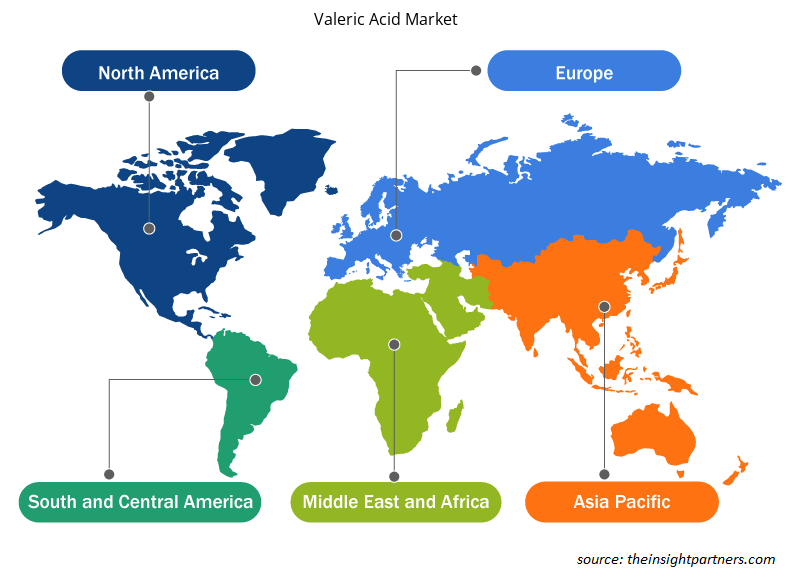
- 获取戊酸市场的区域特定数据
戊酸市场报告范围
| 报告属性 | 细节 |
|---|---|
| 2023 年的市场规模 | XX 百万美元 |
| 2031 年市场规模 | XX 百万美元 |
| 全球复合年增长率(2023 - 2031) | 5% |
| 史料 | 2021-2022 |
| 预测期 | 2024-2031 |
| 涵盖的领域 | 按应用
|
| 覆盖地区和国家 | 北美
|
| 市场领导者和主要公司简介 |
|
戊酸市场参与者密度:了解其对业务动态的影响
缬草酸市场正在快速增长,这得益于终端用户需求的不断增长,而这些需求又源于消费者偏好的不断变化、技术进步以及对产品优势的认识不断提高等因素。随着需求的增加,企业正在扩大其产品范围,进行创新以满足消费者的需求,并利用新兴趋势,从而进一步推动市场增长。
市场参与者密度是指在特定市场或行业内运营的企业或公司的分布情况。它表明在给定市场空间中,相对于其规模或总市场价值,有多少竞争对手(市场参与者)存在。
在戊酸市场运营的主要公司有:
- 中央药房
- 陶氏
- LKT实验室
- 默克公司
- 纳沙泰尔特种化学公司
免责声明:上面列出的公司没有按照任何特定顺序排列。
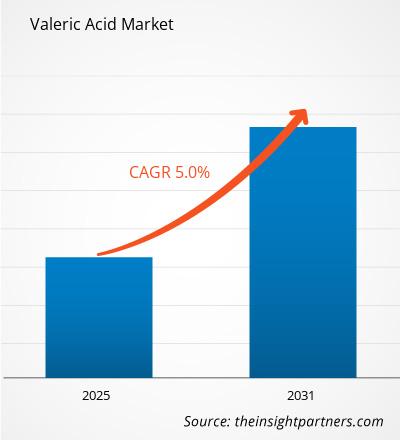
- 获取缬草酸市场顶级关键参与者概述
主要卖点
- 全面覆盖:报告全面涵盖了戊酸市场的产品、服务、类型和最终用户的分析,提供了整体概况。
- 专家分析:报告基于对行业专家和分析师的深入了解而编写。
- 最新信息:该报告涵盖了最新信息和数据趋势,确保了其与业务的相关性。
- 定制选项:此报告可以定制以满足特定客户要求并恰当地适应业务策略。
因此,有关缬草酸市场的研究报告有助于引领解读和了解行业情景和增长前景。尽管可能存在一些合理的担忧,但本报告的总体优势往往大于劣势。
- 历史分析(2 年)、基准年、预测(7 年)及复合年增长率
- PEST和SWOT分析
- 市场规模、价值/数量 - 全球、区域、国家
- 行业和竞争格局
- Excel 数据集
近期报告
相关报告
客户评价
购买理由
- 明智的决策
- 了解市场动态
- 竞争分析
- 客户洞察
- 市场预测
- 风险规避
- 战略规划
- 投资论证
- 识别新兴市场
- 优化营销策略
- 提升运营效率
- 顺应监管趋势












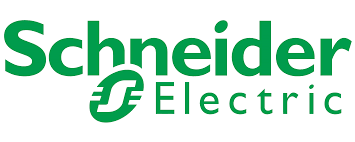


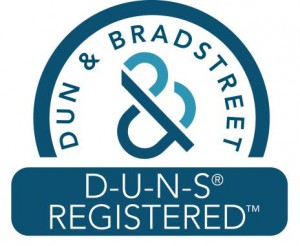
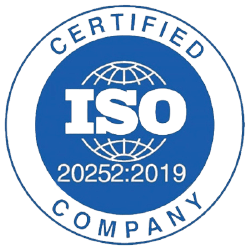


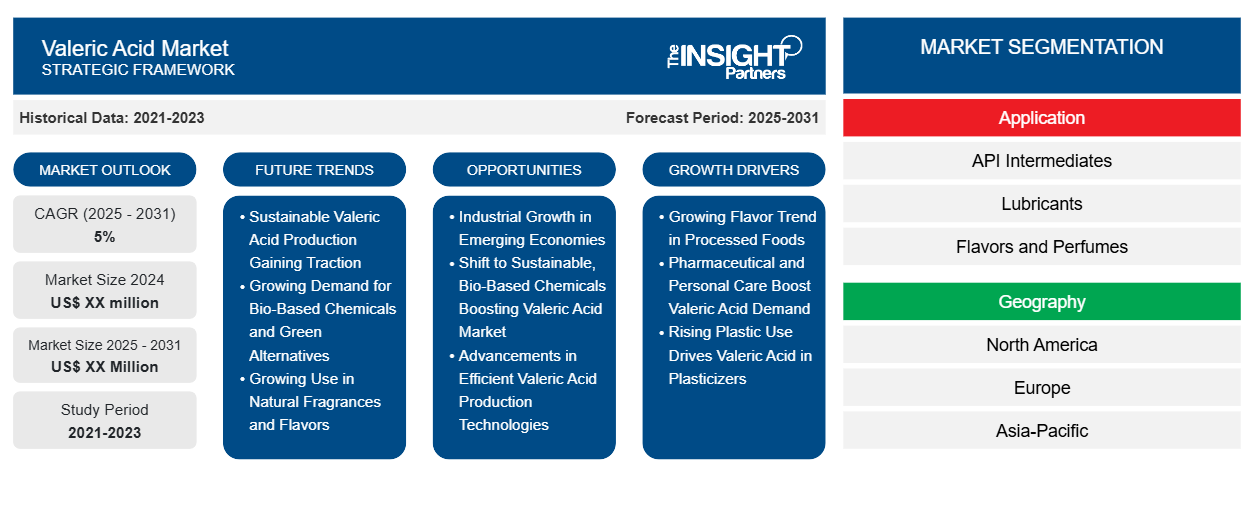

 获取免费样品 - 戊酸市场
获取免费样品 - 戊酸市场